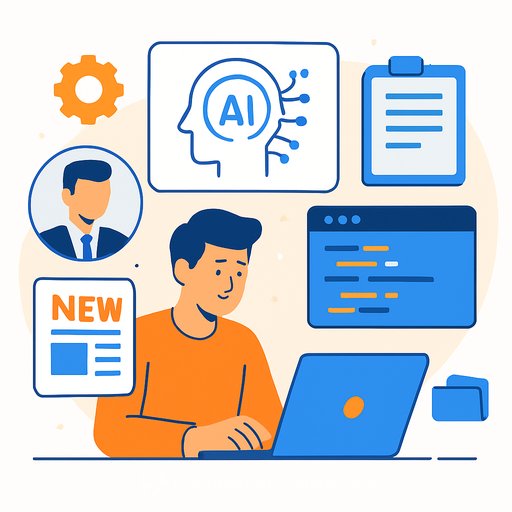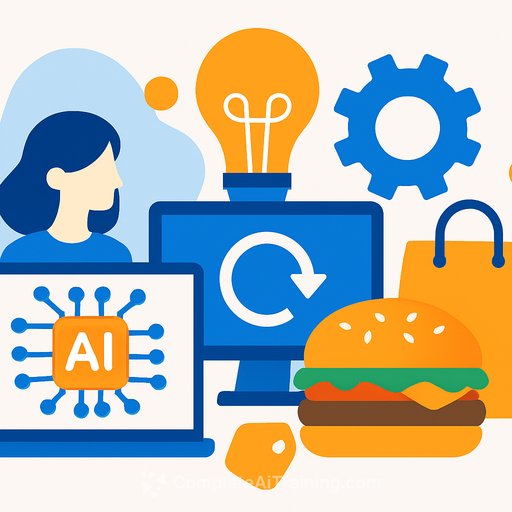Encube launches with €19.7M to bring AI into hardware development
Stockholm-based Encube has launched an AI platform for hardware development and raised €19.7M to scale across Europe and the US. For product development leaders, this signals a push to compress cycles, cut rework, and make better bets earlier in the design process.
Details on the platform are limited, but the direction is clear: put an intelligence layer on top of design, verification, and manufacturing workflows to speed decisions and reduce uncertainty.
Why this matters for product development
- Shorter design cycles: automate repetitive engineering tasks and focus human time on high-impact decisions.
- Fewer respins: catch issues earlier with smarter verification and change-impact analysis.
- Better handoffs: bridge ECAD/MCAD/PLM silos and keep requirements, design, and tests aligned.
- Supply resilience: spot risk in BOMs and second-source earlier to avoid late-stage surprises.
- Manufacturing readiness: flag DFM/DFT issues before they hit the factory floor.
What an AI layer in hardware dev likely does
- Summarizes design intent from specs, tickets, and commits to keep teams on the same page.
- Prioritizes simulations and test benches based on risk and coverage gaps.
- Maps requirement changes to impacted components, tests, and documentation.
- Analyzes BOM for cost, availability, and lifecycle risk, suggesting alternatives.
- Surfaces manufacturability concerns early by pattern-matching past defects and yields.
Note: vendors use different approaches. Validate claims against your stack and data.
Run a focused 90-day pilot
- Weeks 0-2: Pick one product module. Define 3 metrics: cycle time to design review, defect escape rate, and engineering hours spent on verification/admin.
- Weeks 3-6: Integrate read-only with your ECAD/MCAD/PLM and issue tracker. Start with non-critical data to de-risk.
- Weeks 7-10: Trial 2-3 use cases: requirements traceability, change-impact analysis, and verification planning.
- Weeks 11-13: Measure deltas, run an A/B on one sprint, and hold a go/no-go review with a clear ROI cutoff.
Integration checklist
- Core tools: ECAD/MCAD (e.g., Altium, Cadence, Siemens NX), PLM (e.g., Windchill, 3DEXPERIENCE), and version control (Git, Perforce).
- Requirements/test: Jira/Azure DevOps plus Polarion/Jama for traceability.
- Security: IP protection, SSO/SAML, data residency (EU/US), audit logs, and export-control compliance.
- Deployment: On-prem or private cloud VPC; clear data boundaries and encryption at rest/in transit.
- ML operations: Model versioning, prompt/response logging, and human-in-the-loop approvals for high-risk changes.
What to ask vendors (including Encube)
- Does the model train on my IP? If so, can I opt out and keep a private model boundary?
- Which connectors are native vs. custom work? What's the integration roadmap?
- How do you prevent incorrect suggestions from entering the design? What guardrails exist?
- Can you run fully air-gapped? What are the hardware requirements?
- Pricing triggers: seats, data volume, API calls, or projects? Any overage fees?
- SLAs, incident response, and third-party audits (e.g., SOC 2, ISO 27001).
Metrics that matter
- Cycle time from requirement change to approved design update.
- Verification coverage vs. effort hours.
- Defects found pre-release vs. post-release.
- BOM risk score: availability, lifecycle status, and single-source exposure.
- Engineering hours shifted from admin to design and validation.
Risks and how to mitigate
- Incorrect recommendations: Keep human approvals on changes; tie AI suggestions to sources and evidence.
- Scope creep: Start with one module and two use cases; expand only after measured wins.
- Data leakage: Enforce strict data scoping and redaction; run privacy tests before production.
- Hidden costs: Map integration and change-management costs into your ROI model upfront.
Governance
Adopt a lightweight AI policy, define approval checkpoints, and track model decisions alongside engineering rationale. For a clear governance baseline, see the NIST AI Risk Management Framework: NIST AI RMF.
Team skills to line up
- Product/Hardware lead to own metrics and scope.
- Systems engineer for requirements and traceability.
- Verification lead to tune coverage and test priorities.
- DevOps/IT for identity, security, and deployment.
- Data/ML engineer for evaluation sets and guardrails.
Bottom line
Encube's €19.7M launch is a clear signal: AI is moving into day-to-day hardware workflows. If you run product development, pick a narrow slice, pilot fast, measure hard, and scale only after the numbers hold.
If your team needs structured upskilling on AI workflows across roles, review this curated catalog by role: AI courses by job.
Your membership also unlocks:






